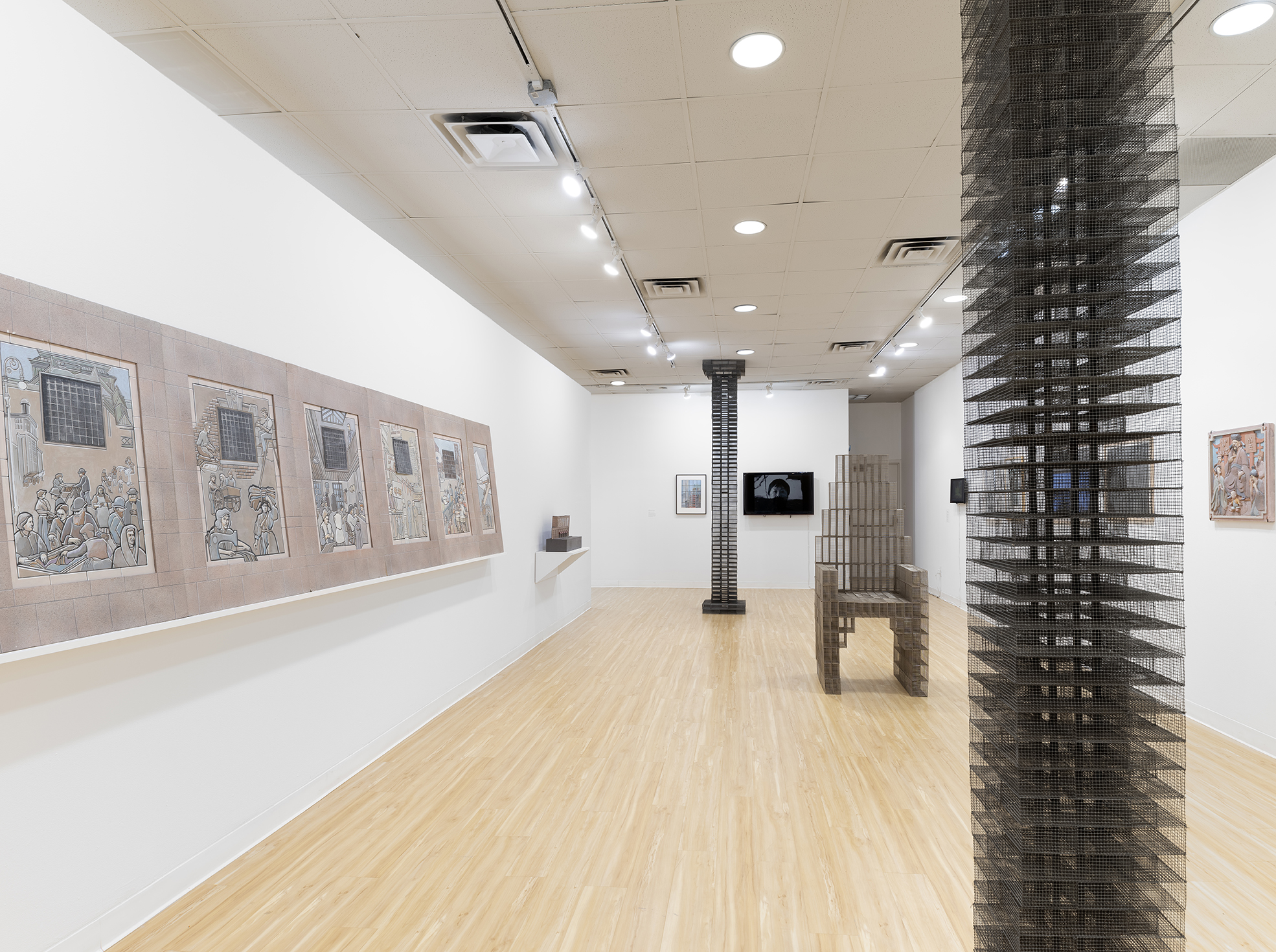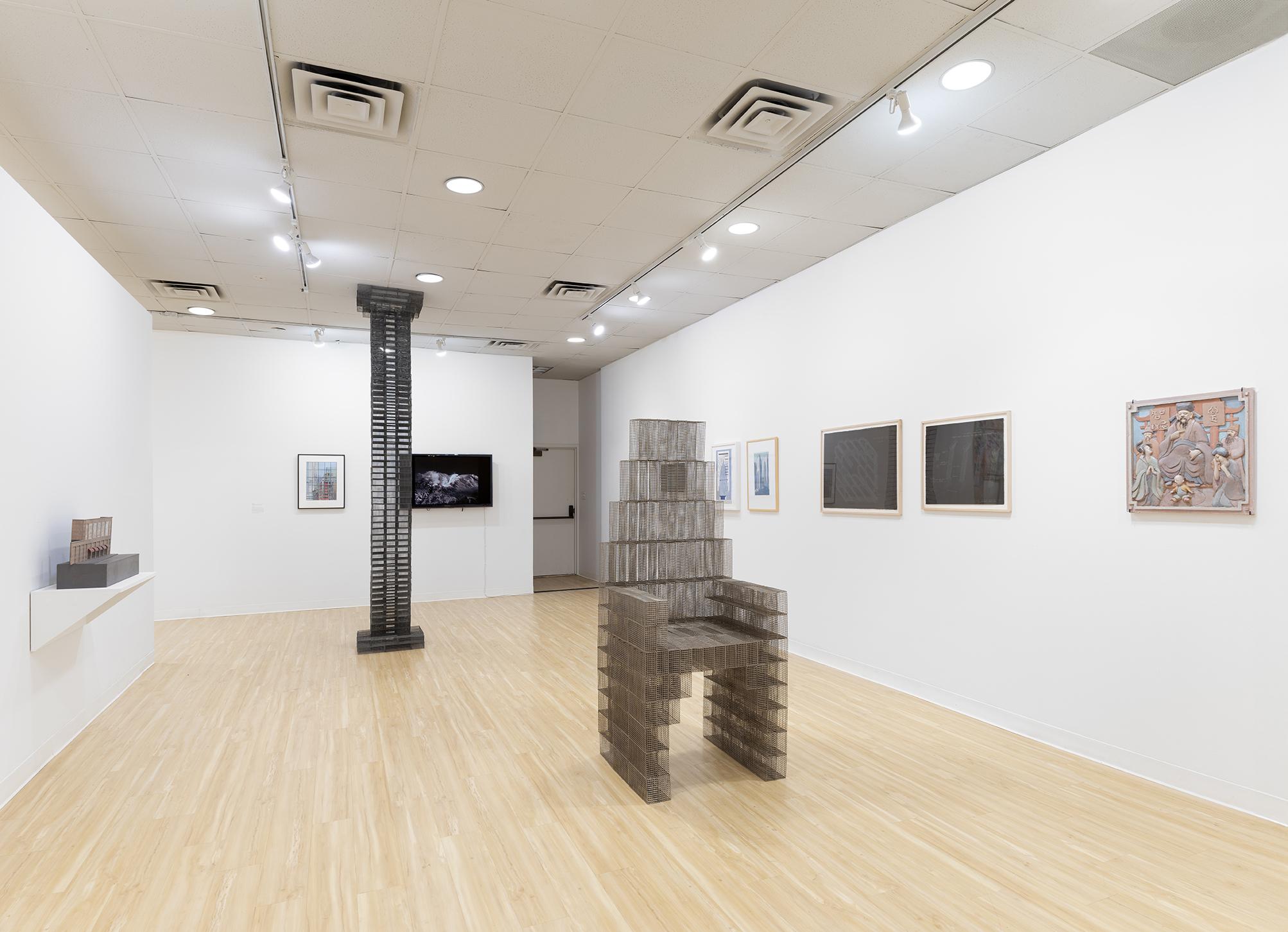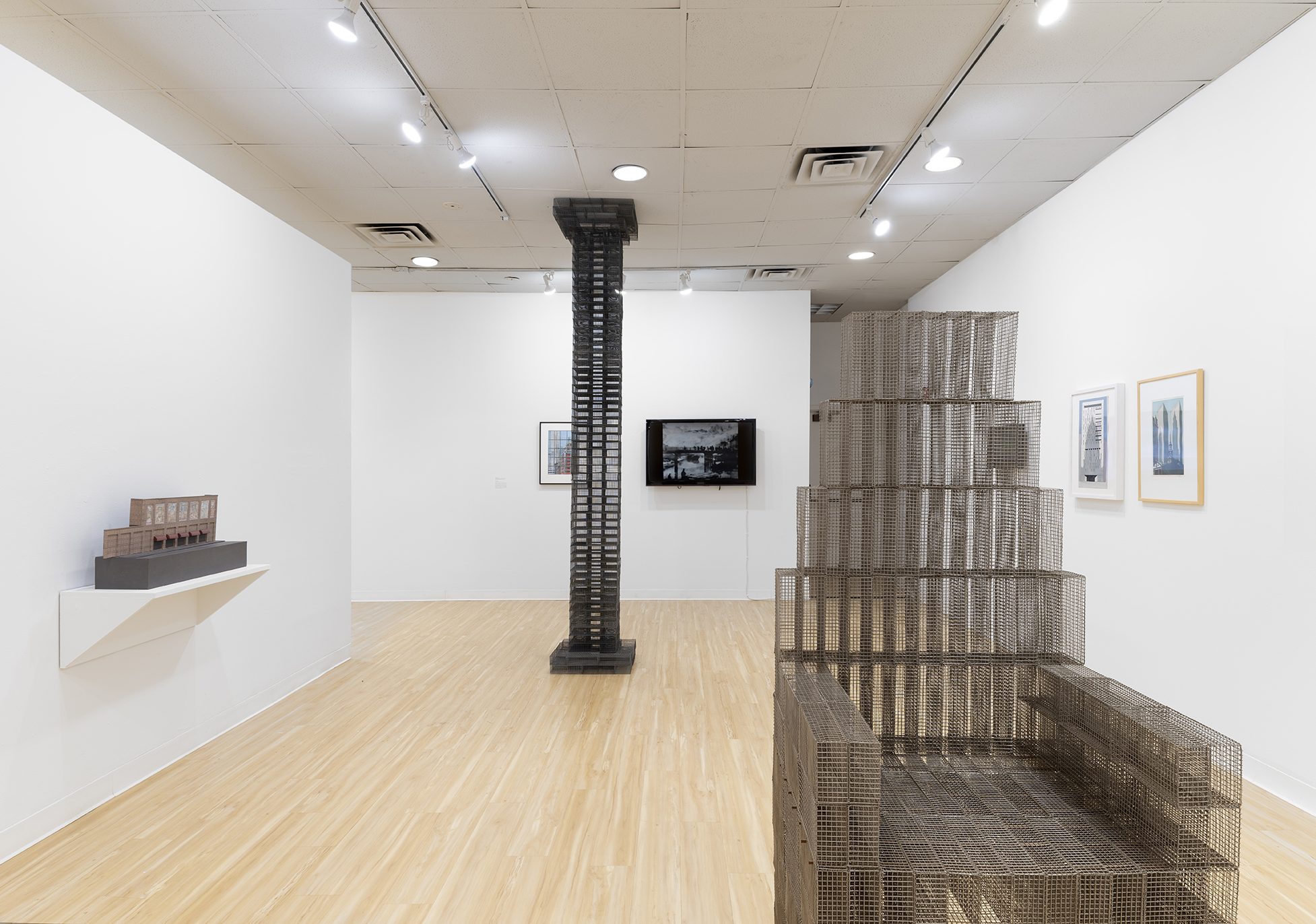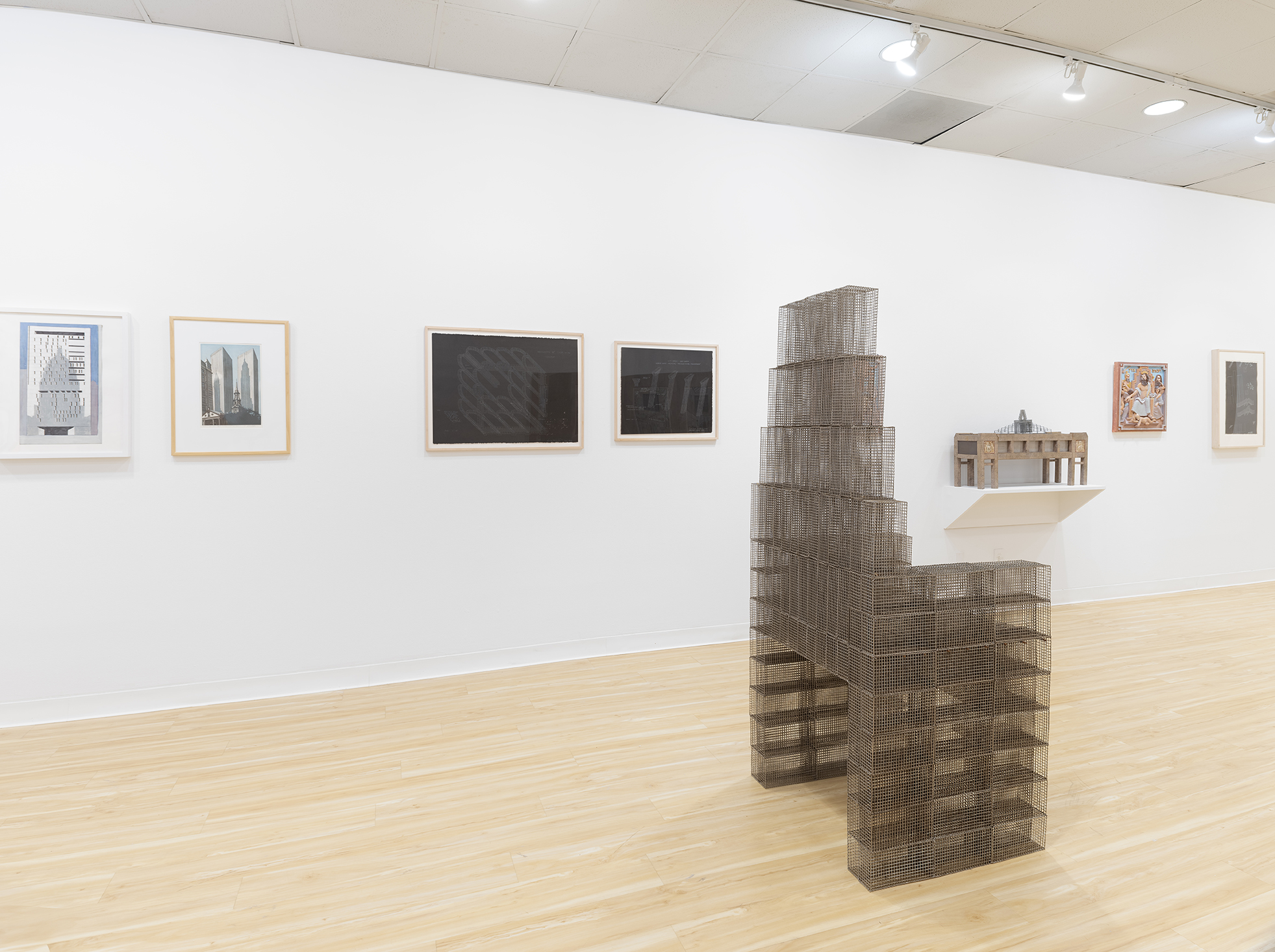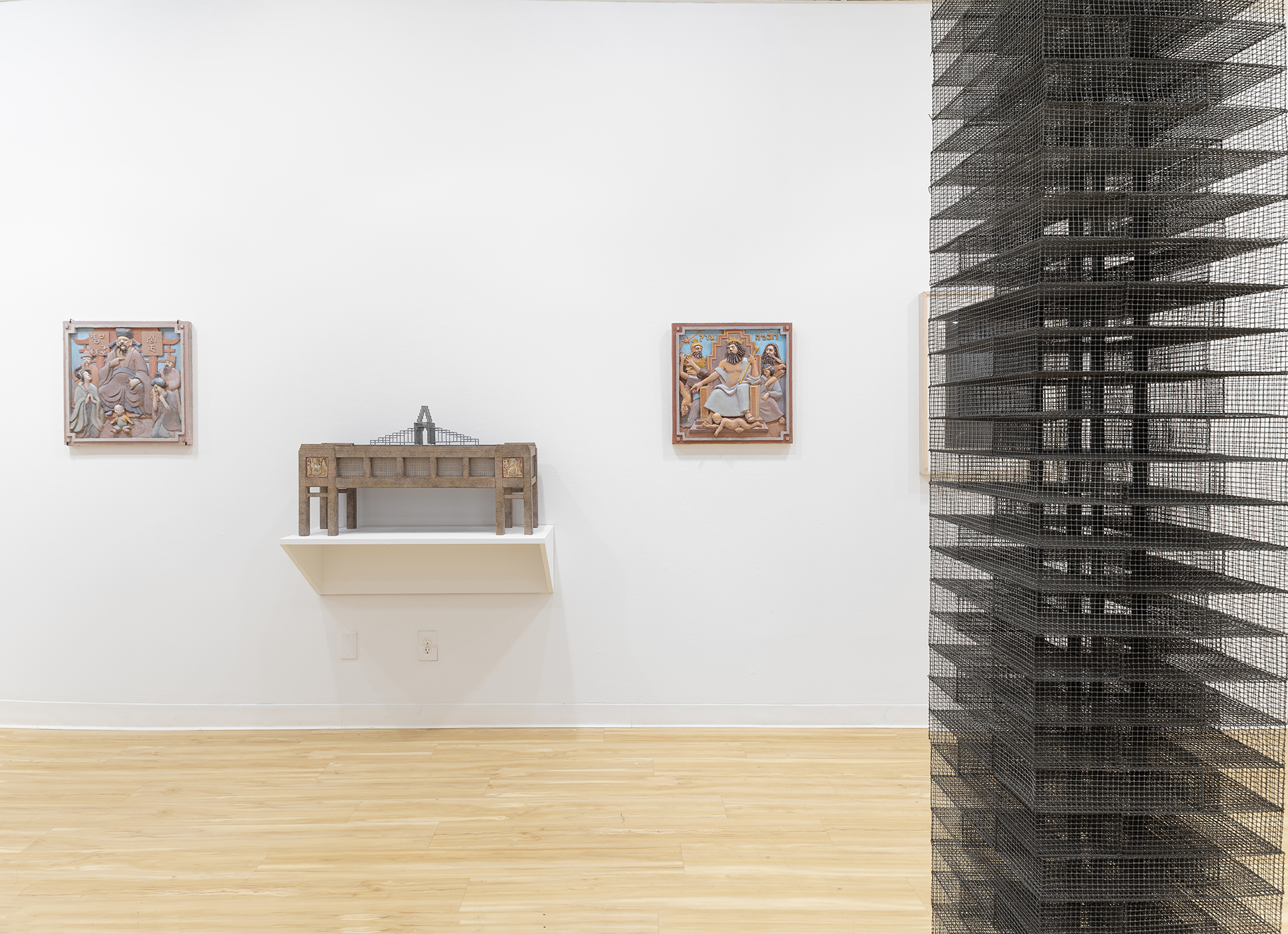Kit-Yin Snyder and Richard Haas
Kit-Yin Snyder and Richard Haas
September 21, 2023 – December 9, 2023
 Kit-Yin Snyder, detail of Drawing for Throne of Solomon, gouache and pencil on paper, 18 x 22 inches
Kit-Yin Snyder, detail of Drawing for Throne of Solomon, gouache and pencil on paper, 18 x 22 inchesOpening Reception: Thursday, September 21, 2023, 4:30–7:30pm
In 1985, the New York City Percent for Art program commissioned artists Kit-Yin Snyder and Richard Haas to create a public artwork at the site of the Manhattan Detention Center complex in Chinatown. Completed between 1989 and 1992, this work consisted of site-specific sculptures and pavement design by Snyder, and wall murals and friezes by Haas that together conveyed themes and iconography related to stories of civic justice and immigration in New York City. Located in Lower Manhattan at the intersection of Baxter Street, Centre Street and White Street, this public artwork by Snyder and Haas provided visitors to the building and the community members in the surrounding neighborhoods with a shared public space for contemplation amidst this intimidating complex of buildings, and was awarded the Art Commission Award for Excellence in Design in 1988.
In 2021, as part of New York City’s borough-based jails plan and the redevelopment of this site into a larger prison complex, this public artwork was removed and partially destroyed—with some parts placed in temporary storage at Rikers Island. The artists and members of the community protested the removal of this artwork and the artists sued the city under the Visual Artists Rights Act (VARA) of 1990 resulting in a settlement where the city is obligated to incorporate or recreate their artworks within the new development to preserve the legacy of their original artwork and contributions to the community. With parts of the installation destroyed and the timetable for the development of the new prison difficult to determine, it is unclear what shape this recreated artwork will take, how it will work within the context of a new site, and if the artists will be present to see it through to completion.

Calling attention to the precarity of public art in a city that is constantly in flux and examining the range of production by two artists with extensive careers working in the public realm, this exhibition looks at the indeterminate status of this public artwork as an opportunity to consider the full life cycle of the public artwork—from proposed, imagined, or never-realized works to those that no longer exist and all of the material generated throughout these endeavors. The exhibition at the Yeh Art Gallery brings together preparatory paintings, drawings, sculptures, models and ephemera related to this public artwork at the site of the Manhattan Detention Center along with drawings and proposals for other unrealized public artworks and more recent examples of work that highlight their respective studio practices in painting and video. Telling the story of this public artwork in a broader context, this presentation addresses the complexities of working in the field of public art and the vital role it can play, both in an artist’s career and within the communities who so deeply value its significance.
The most prominent elements of the original installation by Snyder consisted of her seven freestanding wire-mesh columns entitled The Seven Columns of the Temple of Wisdom which represent the biblical notion of the “Seven Pillars of Wisdom” and reference the pillars at the entrance to “Solomon’s Throne.” Snyder’s wire- mesh works are made from stainless steel or galvanized aluminum mesh that she hand-sewed into modular brick forms—a process she incorporated into numerous installations throughout the 80s. In a similar wire-mesh construction, Snyder created The Throne of Solomon atop the bridge that connected the North and South towers of the Manhattan Detention Complex. Additionally, Snyder created a geometric pavement design in the ground of the plaza that included pictograms for the Chinese words for fair 中 正, and two rows of apple trees planted along the White Street plaza. Snyder’s pavement design and tree plantings have all been destroyed during the building demolition process, while her seven columns and throne have been dismantled and are in storage at Rikers Island. The exhibition at the Yeh Art Gallery includes two wire-mesh columns by Snyder similar to those originally installed at the Manhattan Detention Center, a version of “Solomon’s Throne” that was made at a smaller scale, and an axonometric drawing of the throne design.

Along Baxter Street, Richard Haas designed a seven-panel mural installed directly onto the second story of the building’s facade, entitled Immigration on the Lower East Side of New York. These murals depicted the communities—Chinese, Hispanic, Italian, and Jewish—that have immigrated to the Lower East Side throughout the 19th and 20th centuries. Along both sides of the same bridge with Snyder’s throne, Haas also contributed four sculptural wall friezes, entitled The Judgements of Solomon and Pao Kung. These friezes by Haas illustrate historical narratives about ideas of judgment, depicting the biblical story of the judgment of King Solomon and Pao Kung, a Song Dynasty Chinese judge. Haas’ seven-panel mural could not be saved during the demolition process as it was painted directly onto the building while his four friezes have been dismantled and are in storage at Rikers Island. The Yeh exhibition includes preparatory gouache paintings for all seven panels of Haas’s mural as well as paintings and plaster maquettes for each of Haas’s friezes.

Kit-Yin Snyder, (b. 1935, Guangzhou, China) immigrated from China to the United States at age 15 and has worked as an artist since the 70s. For several decades, Snyder produced environmental sculptures, exhibited in New York area sites and public spaces, and she was the first artist-in-residence at Bryant Park through a program with the Public Art Fund in 1981. Her large-scale steel sculpture in Margaret Mitchell Square, in Atlanta, Georgia continues to provide a space for visitors today and includes wire-mesh columns and architectural components similar to those in the Manhattan Detention Center artwork. Throughout the 80s, Snyder exhibited widely in the U.S. and abroad at such venues as SculptureCenter, Just Above Midtown, P.S. 1, Snug Harbor, Hudson River Museum and the Bronx Museum among numerous others. In the late 90s, Snyder began working with video, allowing her to combine visual imagery with story- telling to explore her identity as a Chinese-American artist. Snyder’s work has received awards from the Yale University Womens Caucus for Art, Jerome Foundation, National Endowment for the Arts, NYFA among many others; and Excellence in Design awards for her public artworks in Atlanta, GA and New York City.
Richard Haas (b. 1936, Wisconsin, U.S.) is a renowned painter and muralist, who has had a long and successful career creating countless exterior and interior murals, and exhibiting extensively in the United States, Germany, Japan, and France. Haas’ large-scale murals are deeply informed by his years living in SoHo in the 70s as the neighborhood went through drastic change and urban renewal projects. Addressing the aesthetics of memory amidst the urban landscape, Haas’s murals also often connect with cultural, political, and social issues of a given community or site. Haas’s significant public works include the Oregon Historical Society in Portland, the main branch of the New York Public Library, the Robert C. Byrd Federal Building and Courthouse in Beckley, West Virginia, the Sarasota County, Florida Judicial Center, the Smithsonian Institution, Washington, D.C., and the former Board of Education building in Downtown Brooklyn. Haas's work has received awards from the American Institute of Architects Medal of Honor, Guggenheim Fellowship, National Endowment of Arts, and the American Academy of Arts and Letters, among others. He was elected into the National Academy of Design in 1993 and served as President of the Academy from 2009 to 2011.
Kit-Yin Snyder and Richard Haas is organized by Max Warsh, Director of the Yeh Art Gallery, St. John’s University.

